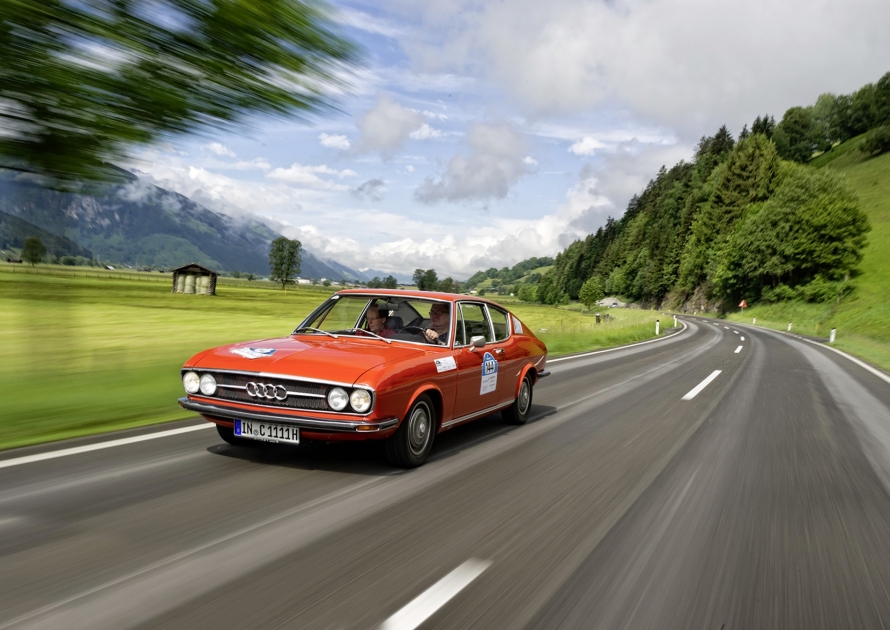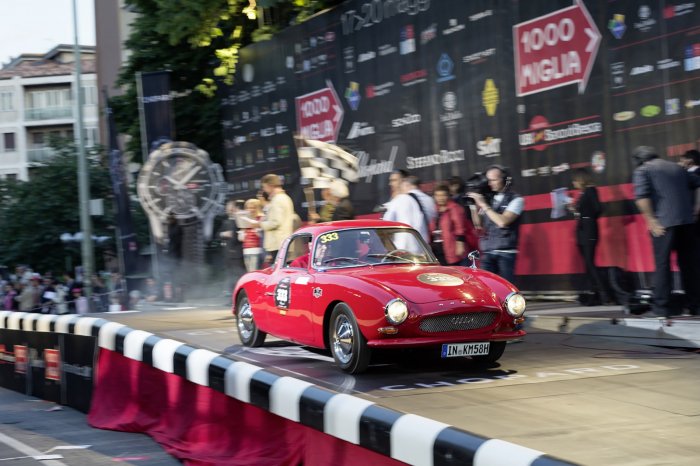
Audi coupés – sportiness and elegance at the Audi museum mobile
The Audi museum mobile is presenting 12 coupés dating from the 1930s to the present, in an exhibition titled “Dynamic Sculpture – the Tradition of Sportiness and Elegance at Audi.” The new special show will run from May 3 to September 18. Its thematic focus is on the special coupé body form and its origins.
There is hardly a body type that can match the magnetism the coupé exerts on people who love beautiful cars. With origins that can be traced back to coach making, the form quickly went on to become the epitome of elegance and good automobile design. When vehicles with this body type first appeared on the scene, they were often known as “Les Désobligeantes” (the unobliging ones). The style takes its name from the idea to “cut” (“couper/coupé” in French) a four-seater coach body to create a two-seater. The result was a body type that aroused the interest of the elite set. And in the years that followed, the high-quality interior equipment and trim installed in coupés made them the favorite vehicles among the high society of major European cities.
With the initial attempts at streamlined design in the 1930s, the roof form sloping downward to the rear began to catch on. The criteria by which we define a coupé today emerged only gradually, however: a short, flattened roof resting on two posts, with a two-seat interior. The coupés really hit their stride in the 1950s and 1960s. A key factor behind this popularity was the long-distance races of the period, like the Mille Miglia, the Targa Florio, the Liège-Rome-Liège race and the “2000 km durch Deutschland” (2,000 kilometers though Germany), which almost seemed to have been conceived specifically for coupés. Typical of coupé design was the combination of a great looking exterior and the best technology. Still today, the coupé is seen as the jewel in the product lineup of every automaker.
How have coupés developed over time? And what will the coupé of tomorrow look like? The special exhibition “Dynamic Sculpture – the Tradition of Sportiness and Elegance at Audi” will provide answers to these questions.
Awaiting visitors to the special show will be 12 coupés from Audi history. A remarkable highlight is a replica of the “Manuela,” a unique coupé version of the Horch 853. The car was specially built for Bernd Rosemeyer in 1937. The most successful and most popular Grand Prix driver for Auto Union back then, Rosemeyer loved this luxury automobile – a passion clearly captured in countless photographs. This and the fact that the motorsport star was killed while attempting a world record run just a few months after he got the car, exalted the Horch “Manuela” to its legendary status. It is believed the original coupé disappeared without a trace during World War II.
Other treasures from the annals of company history trace the body type through the 1950s: a rare DKW Meisterklasse Coupé with a body by the specialist company Hebmüller, a DKW Monza (1956), the Auto Union 1000 Sp (1958) and an NSU Sport Prinz (1959). Also included in the exhibition is the first Audi coupé of the post-war era, the Audi 100 Coupé S from 1970. Representing the historic return of the four rings to the premium segment are the Audi Coupé GT (1980), the Audi quattro (1981), the Audi Sport quattro (1983) and the Audi Coupé from 1988. Visitors will also have the opportunity to see the first edition of the style icon Audi TT from its debut year 1998. And finally, the path to the present culminates with the Audi A5 from 2007.




























